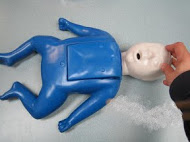A seizure involves the surge of electrical activity that abruptly occurs in the brain. Depending on the type of seizure and history of episodes, there are indicative signs that an individual might have before a seizure will occur. On the other hand, this can be difficult to detect among young children, especially toddlers.
There are different types of known seizures that are categorized into two groups – generalized seizures and focal seizures. The generalized seizures will cause the individual to become unconscious and can experience jerking movements or might not move at all. As for the focal seizures or partial seizures, the individual is still conscious but experiences different sensations during an episode. It is important to note that these types of seizures might manifest in a different way, thus it is vital to know what kind of seizure the child has as well as being able to determine if one is about to take place.

Steps to help determine an upcoming seizure among toddlers
- Observe the child for an abrupt episode of unconsciousness. This can occur while being in engaged in any activity such as playing. The toddler will lose consciousness without warning or appear perplexed right before the seizure starts.
- You have to listen to a toddler if he/she suddenly starts to cry or creates strange noises with or without bizarre movement. Take note that if a child cries out without being able to focus when called or consoled might indicate an active seizure.
- Check the child for any episodes when he/she seems to gaze off into space and does not appear to see or hear when someone is trying to get his/her attention. This can indicate an absence seizure and usually lasts for a few seconds.
- Monitor the child for any changes in the muscular strength such as dropping objects or falls. There are some seizures that can cause the individual to lose all muscle tone which is called as atonic seizure.
- Watch out for any abrupt jerking or stiffening episodes since these are the classic indications of a tonic-clonic seizure.
Important considerations to bear in mind
Do not stick anything into the mouth of the child if he/she is having an active seizure. This is a basic first aid measure that you should be familiar with. Take note that he/she will not literally swallow the tongue. Anything that is placed into the mouth can become a choking hazard.
If the child is experiencing his/her first seizure, it requires immediate medical care. If the child does not regain consciousness, starts to show signs of breathing difficulty or sustains a head injury or has back-to-back seizures, call for emergency assistance right away.
A child who is at risk for seizures must be checked by a doctor. Proper testing can be done in order to determine the type of seizure and the appropriate treatment can be provided as early as possible.
